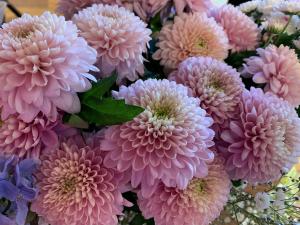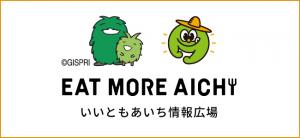ページの先頭です。
メニューを飛ばして本文へ
本文
愛知県農林水産部門Webサイト
新着情報
トピックス
イベント情報等
知事の名刺を使ったPR
10月・11月の知事名刺は「豚肉」です!
愛知県は豚肉の生産が盛んで、豚肉の産出額は290億円で全国9位です。
また、本県は三元肉豚の親となる3品種(ランドレース種、大ヨークシャー種、デュロック種)すべての系統豚を供給しており、今年9月には、愛知県農業総合試験場が新たなデュロック種「アイリスD2」を開発しました。
2027年夏以降に「アイリスD2」を利用した三元肉豚の養豚農家からの出荷が開始される見込みです。
主な産地は、田原市、豊橋市、西尾市です。

花いっぱい県民運動
11月の今月のあいちの花は「ディスバッドマム」です!
ディスバッドマムは、脇芽(bud(余分な蕾や枝などのこと))を摘み取り(dis)、一輪の花に栄養分を集中させることで、大きく仕立てた西洋ギク(mum)のことです。
和花・仏花という従来のキクのイメージと異なり、色鮮やかで豪華な印象のため、近年は結婚式やフラワーアレンジメントにも使用されます。
本県のキクの産出額は全国1位で、主な生産地は田原市、豊川市、西尾市です。
SNS等による情報発信
愛知県農林水産部門X(旧Twitter) @nourinse
・農林水産部門公式X(旧Twitter)アカウントポリシー [PDFファイル/97KB]











